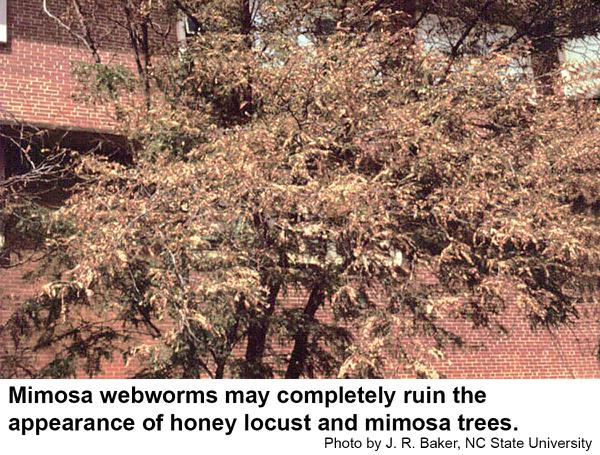Are you tired of the relentless encroachment of mimosa trees, their thorny branches and invasive roots wreaking havoc on your outdoor haven? You’re not alone. Mimosa infestations have become a growing concern, leaving countless homeowners and land managers seeking effective eradication strategies. In this comprehensive guide, we delve into the depths of mimosa tree removal, empowering you with the knowledge and tools to reclaim your landscape and restore harmony to your surroundings.

Image: www.embracegardening.com
Understanding the Mimosa Tree: An Invader Disguised as Beauty
Mimosa trees, also known as silk trees, may allure with their stunning pink blooms in the spring, but behind their delicate appearance lies a formidable invasive species. Native to Brazil, mimosa trees have found a fertile home in many parts of the world, effortlessly colonizing disturbed areas and threatening native ecosystems. Their aggressive growth and prolific seed production make them a formidable adversary in any landscape.
A Multi-Faceted Approach to Mimosa Removal: Unveiling the Best Practices
Conquering a mimosa infestation demands a multifaceted approach, combining both physical and chemical control methods. Let’s explore each strategy in detail, unearthing their strengths and limitations:
1. Physical Removal: Uprooting the Menace
Physical removal is the most effective method for eradicating small mimosa trees. Digging up the entire root system is crucial to prevent regrowth. Employ a sharp shovel or spade, ensuring you excavate all the roots, even the smallest ones. However, this method becomes increasingly challenging as trees mature, making chemical control a more suitable option.

Image: content.ces.ncsu.edu
2. Chemical Control: Harnessing the Power of Herbicides
Herbicides offer a potent solution for managing large mimosa infestations. Triclopyr, a systemic herbicide, is particularly effective in eliminating mimosa trees. Apply the herbicide directly to the stump after cutting down the tree, or inject it into the trunk. Always follow the manufacturer’s instructions carefully and observe proper safety precautions when handling herbicides.
3. Cut Stump Treatment: A Precise Strike to End Regrowth
Cut stump treatment targets the remaining stump after felling the mimosa tree. This method involves applying an herbicide to the freshly cut surface to prevent resprouting. It’s crucial to apply the herbicide promptly after cutting down the tree, as the stump will quickly seal over, reducing its effectiveness.
4. Basal Bark Treatment: A Strategic Application for Larger Trees
For larger mimosa trees, basal bark treatment provides a practical approach. This technique involves applying an herbicide in oil form to the lower 12-18 inches of the tree trunk. The oil penetrates the bark and travels through the tree, effectively killing it.
Seeking Expert Advice and Local Regulations: Navigating the Path to Success
Before embarking on your mimosa tree removal endeavor, it’s wise to consult with a certified arborist or local extension office. They possess invaluable knowledge and can provide tailored recommendations based on your specific situation. Additionally, always adhere to local regulations regarding herbicide use and disposal to ensure your efforts align with environmental and safety standards.
How To Get Rid Of Mimosa Trees
Conclusion: Restoring Balance, Reclaiming Your Landscape
Eradicating mimosa trees is a crucial step towards restoring harmony and ecological balance to your landscape. By embracing the strategies outlined in this guide, you can effectively eliminate this invasive species, paving the way for native vegetation to flourish and reclaim its rightful place. Remember, patience and persistence are key, and with the right approach, you can successfully vanquish mimosa trees, transforming your outdoor space into a sanctuary that reflects your passion for nature.







